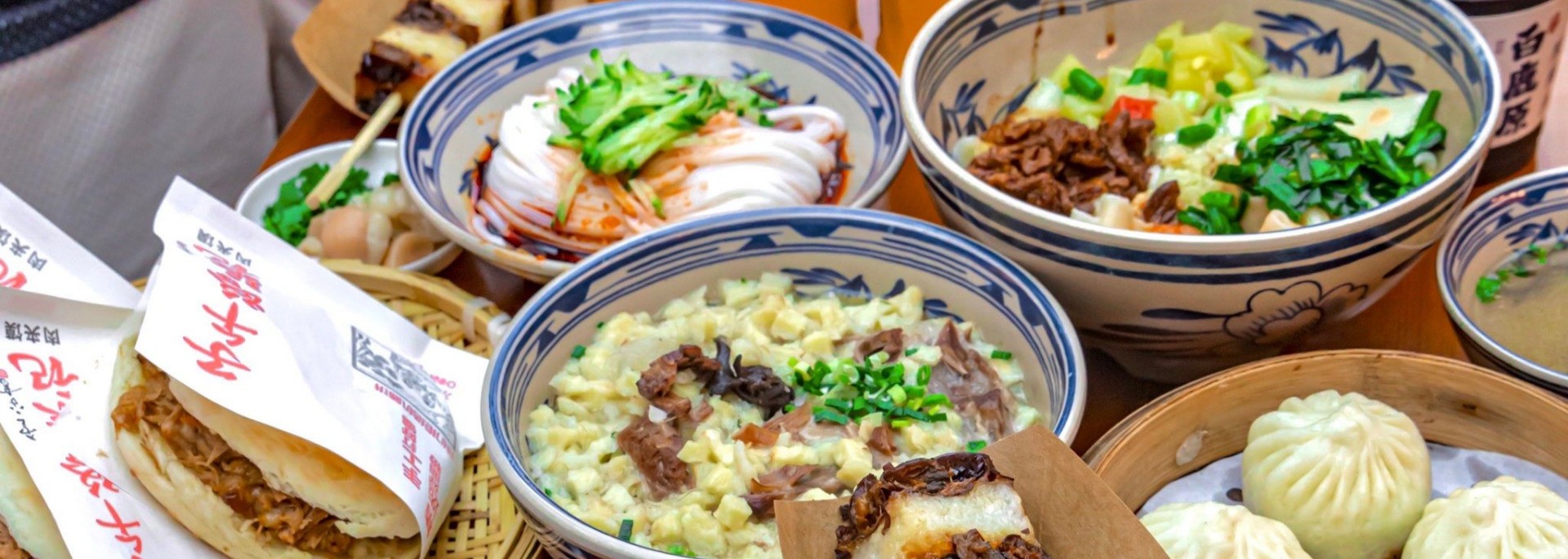
Top Xian Food: Unveil the Authentic Flavors of Xian through Local Insights
By Leo
Hello there, fellow food adventurers! Leo here, ready to guide you through the unparalleled gastronomic landscape of Xian.
I am a native of Xian. Xian’s historical significance as the starting point of the ancient Silk Road has profoundly influenced its cuisine, infusing it with a captivating blend of Central Asian, Middle Eastern, and traditional Chinese flavors. This city’s food scene isn’t just about sustenance; it’s about immersing yourself in a culinary tradition that spans centuries, reflecting a hearty, flavorful character with a distinct Northwestern flair.
When I customize travel plan for our guests, or indeed for my own explorations, the local food scene always takes center stage. In Xian, every dish tells a story, and understanding these narratives is key to a truly enriching journey. Here are my top 10 must-try dishes that genuinely encapsulate the spirit of Xian’s authentic local cuisine.
1. The Iconic Xian “Hamburger”: Rou Jia Mo
For a true taste of Xian, start with the city’s famous Rou Jia Mo – often called the Chinese hamburger. This isn’t your average fast-food burger; it’s a culinary masterpiece. This dish features slow-cooked, seasoned meat—traditionally pork, but the Muslim Quarter excels in lamb and beef versions—generously stuffed into a “mo,” a type of flatbread that’s exquisitely crispy on the outside and wonderfully soft within. The meat is braised for hours with a complex blend of spices, resulting in a tender, incredibly aromatic, and flavor-packed filling. My personal recommendation? Seek out stalls where the “mo” is freshly baked and still warm. Don’t hesitate to try both the pork and lamb variations to discern the subtle differences in their unique seasoning profiles.
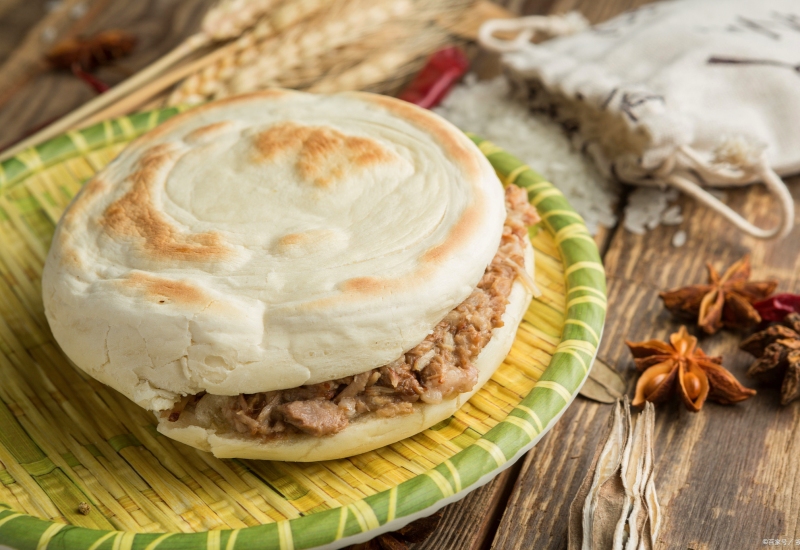
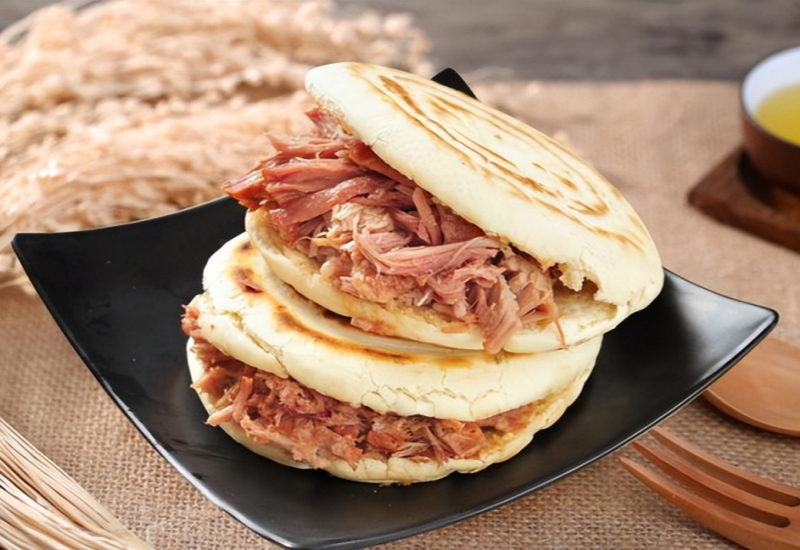
2. The Belt-Like Wonder: Biang Biang Noodle
These are more than just noodles; they are a profound experience. Named after the distinctive “biang” sound the dough produces when expertly slapped against the counter during preparation, Biang Biang Mian are exceptionally wide, thick, and chewy hand-pulled noodles. They stand as a testament to Xian’s deeply ingrained wheat-centric diet. Typically, they are adorned with a sizzling concoction of hot chili oil, garlic, scallions, and often tender braised pork or beef, alongside fresh vegetables. The remarkable texture is what truly sets them apart—robust, satisfying, and memorable long after the last bite. I always suggest watching the noodle-making process if you have the chance; it’s an incredible display of culinary artistry.
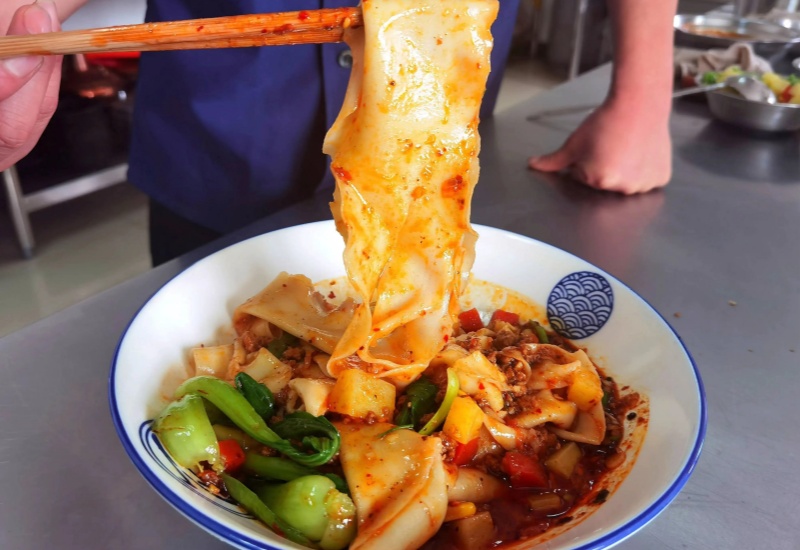
3. Xian’s Refreshing Favorite: Liang Pi (Cold Skin Noodles)
Especially ideal for warmer weather, Liang Pi offers a delightful contrast to Xian’s more substantial fare. These chewy, slippery noodles are crafted from wheat or rice flour. Their uniqueness lies in their preparation: dough is washed to extract starch, which is then steamed to create thin noodle sheets. Liang Pi is served chilled, thoroughly tossed in a tangy and savory sauce made from black vinegar, soy sauce, garlic, chili oil, and frequently, sesame paste. Shredded cucumber, crisp bean sprouts, and spongy pieces of steamed gluten (mianjin) complete this invigorating dish. It’s a cornerstone of the renowned “Sanqin Set Meal,” often enjoyed with Roujiamo and a local Bingfeng soda.
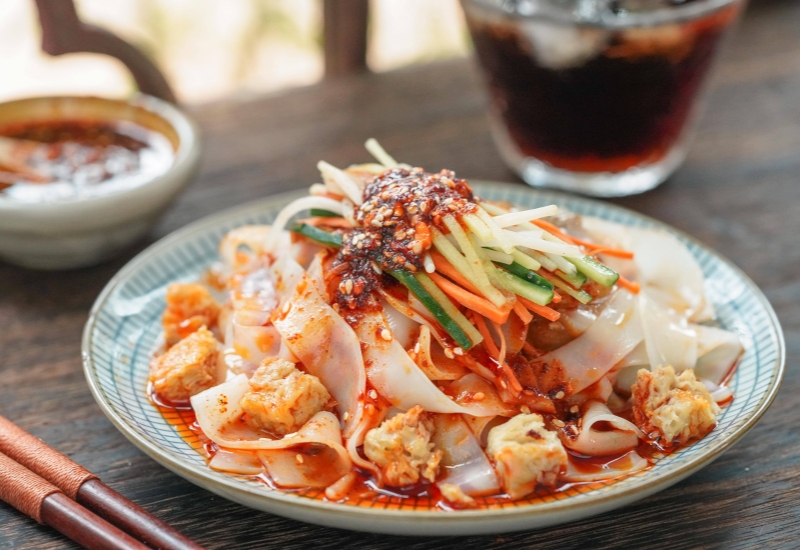
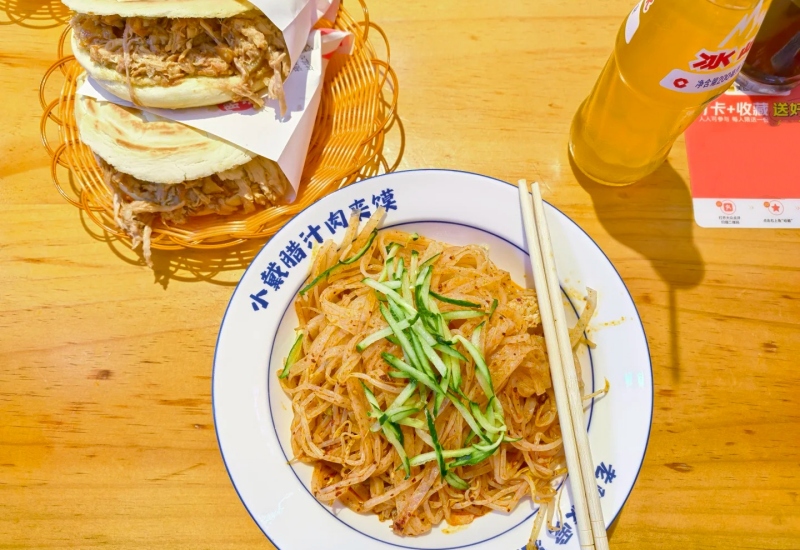
4. The Hearty Staple: Yangrou Paomo (Crumbled Flatbread in Mutton Stew)
This dish transcends mere food; it’s a profound cultural ritual. When you order Yangrou Paomo, you’re typically presented with one or two pieces of unleavened flatbread (“mo”) which you then meticulously break into small, pea-sized pieces by hand. While this may seem meticulous, it is an essential part of the authentic experience! These breadcrumbs are then delivered to the kitchen, where they are gently cooked in a rich, aromatic lamb broth, alongside tender pieces of lamb, delicate vermicelli noodles, and sometimes wood ear mushrooms and fresh scallions. The bread masterfully soaks up the flavorful broth, creating a uniquely satisfying texture and depth of flavor. For an authentic taste, I highly recommend adding pickled sweet garlic and chili oil, just as the locals do.
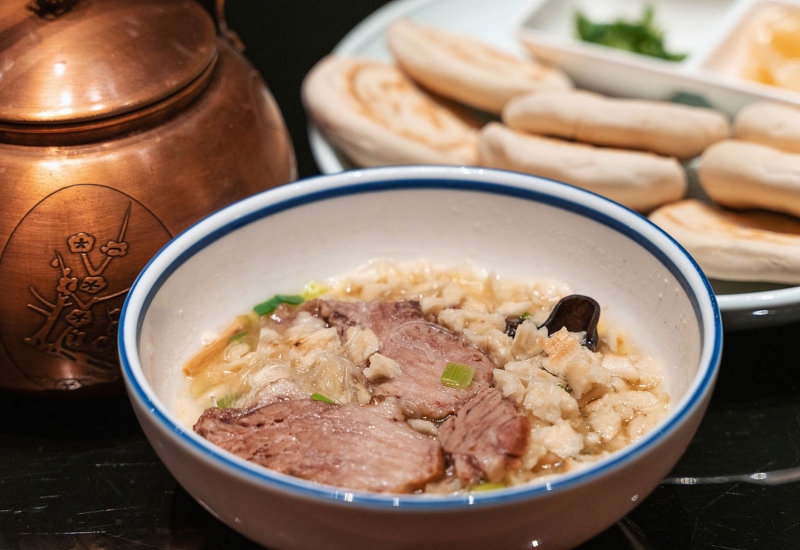
5. Suantang Jiaozi (Sour Soup Dumplings)
While dumplings are a ubiquitous presence across China, Xian’s Suantang Jiaozi possess a special distinction. These sour soup dumplings frequently feature succulent lamb or beef fillings encased in delicate wrappers, all served within a piquant and savory hot and sour broth. The broth typically incorporates ingredients like fragrant sesame seeds, fresh cilantro, finely minced garlic, and fiery chili oil. The harmonious combination of the rich filling and the invigorating broth creates a dish that is both comforting and vibrantly flavorful. It’s a delightful burst of taste in every spoonful and an exemplary demonstration of the bold flavors that define Xian cuisine.
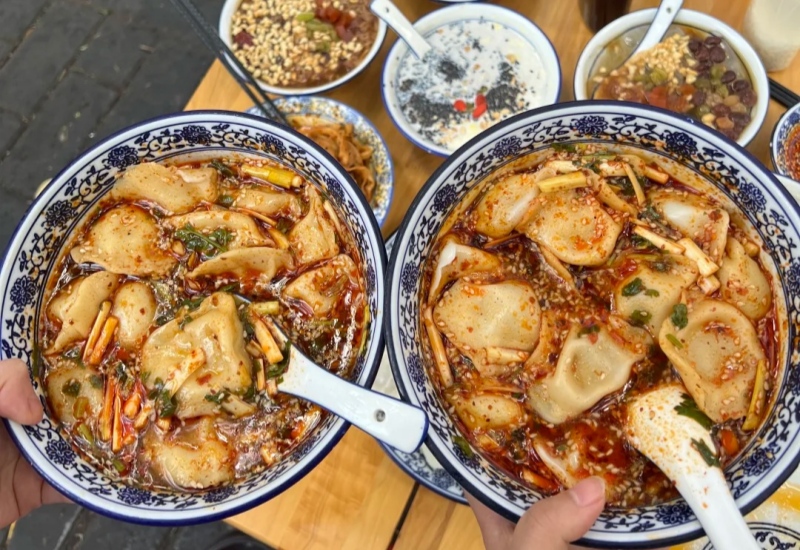
6. The Addictive Street Snack: Yangrou Chuan’r (Spicy Cumin Lamb Skewers)
No visit to Xian’s vibrant street food scene, particularly the bustling Muslim Quarter, is complete without indulging in the spicy cumin lamb skewers. Small, tender pieces of lamb are meticulously marinated, expertly skewered, and then grilled over hot charcoal, generously seasoned with cumin, chili powder, and an array of other aromatic spices. The smoky aroma is utterly irresistible, and the bold, spicy flavor renders these skewers incredibly addictive. I find them to be the quintessential on-the-go snack as you explore the dynamic markets.
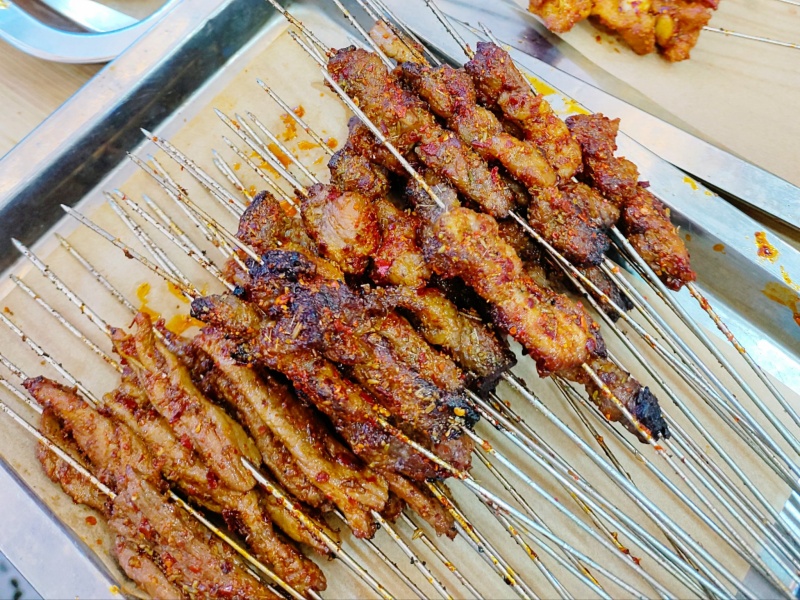
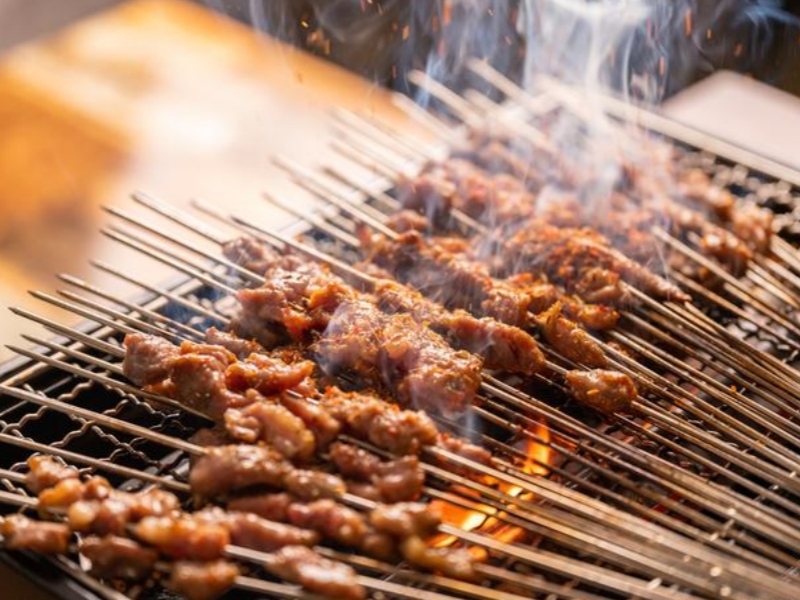
7. Zenggao (Sweet Sticky Rice Dessert)
Concluding your culinary journey through Xian with Zenggao is an excellent choice. This traditional sweet sticky rice dessert is perfectly balanced, offering a gentle sweetness that wonderfully complements the savory and spicy flavors found in many of Xian’s main dishes. It’s made from glutinous rice, often steamed with dates (jujubes) and red beans, creating a delightful texture and natural sweetness. My recommendation is to seek out stalls in the Muslim Quarter that prepare it fresh; the warmth and subtle sweetness provide a comforting finish to your meal.
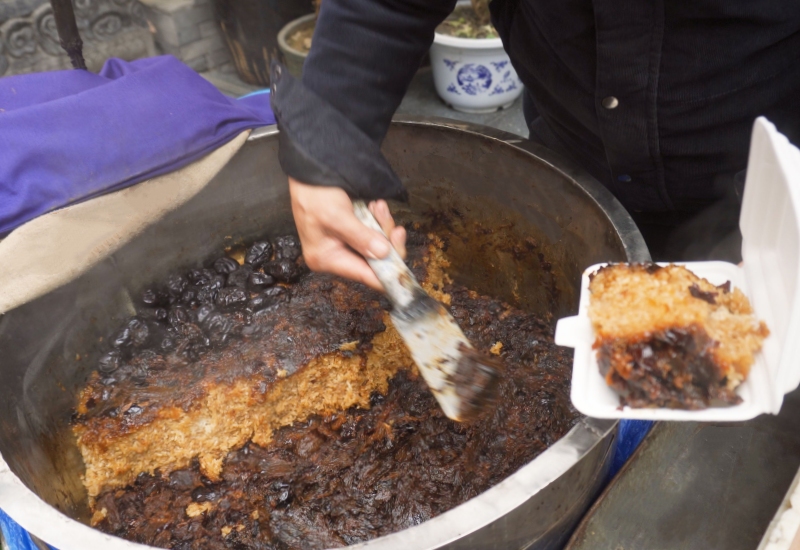
8. Húlu Jī (“Gourd” Crispy Chicken)
Húlu Jī is a truly special Tang-dynasty banquet dish. This involves a whole chicken, first delicately poached with ten different aromatics, then air-dried, and finally deep-fried until its skin achieves a remarkable crispness, almost like shattered caramel. It’s a dish that showcases profound culinary technique and offers a unique texture and flavor profile. If you have the opportunity, this is a must-try for those seeking an authentic taste of imperial Xian cuisine.
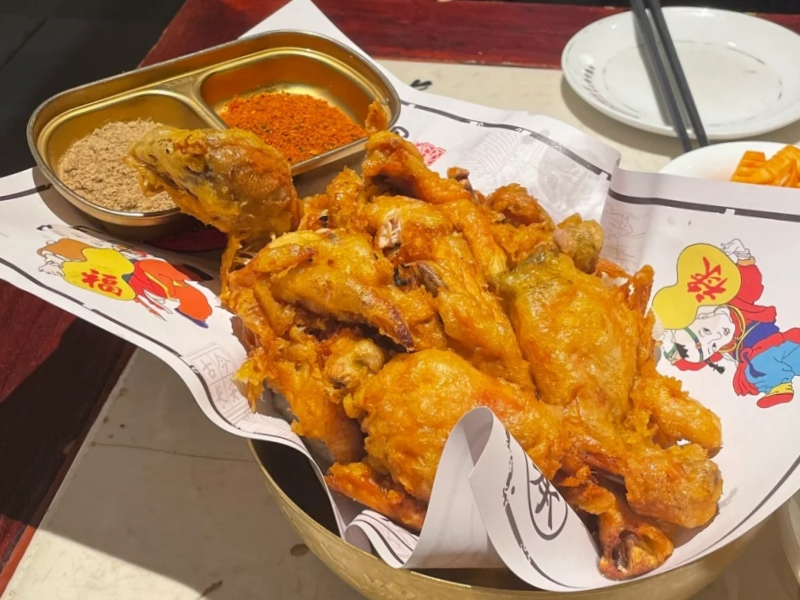
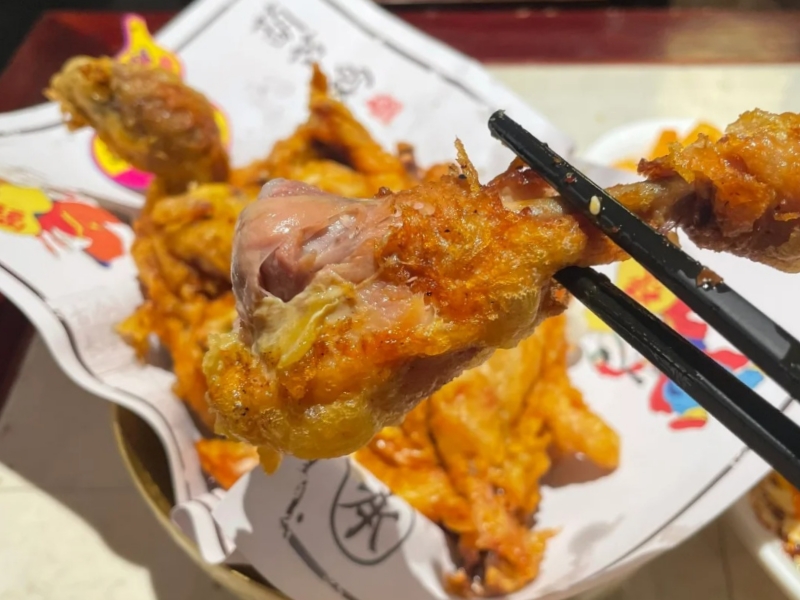
9. Persimmon Fritters
These deep-fried persimmon doughnuts are golden and delightfully fluffy, offering a seasonal treat, especially during autumn. Vendors often sell them for very reasonable prices. I’ve found them to be a perfect indulgence after long walks; they possess a subtle fruit tang and are not overly sweet. Pairing them with a local pomegranate juice creates a truly genuine Xian snack experience.
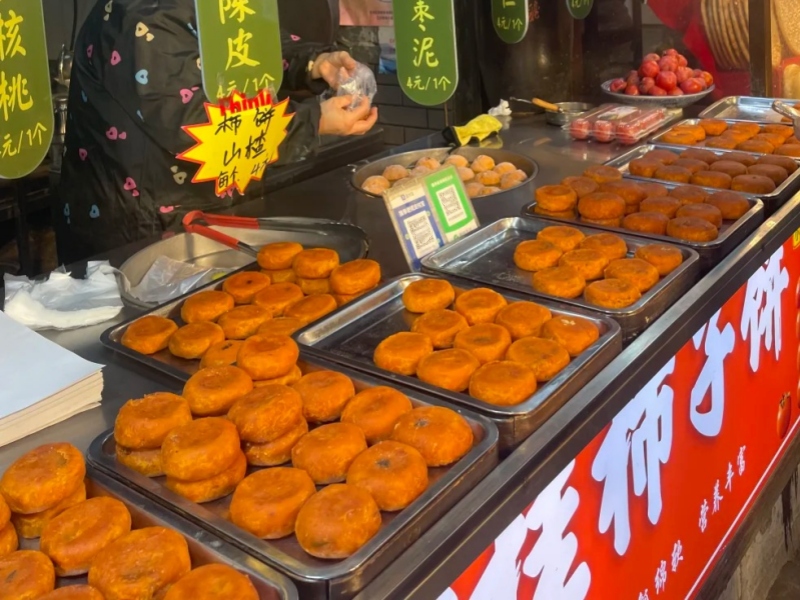
10. Syrup of Plum
Syrup of Plum is a timeless refreshment with deep roots in Xian’s culinary heritage. Made by slowly simmering fresh or dried Chinese plums with rock sugar, a hint of osmanthus, and select spices, the resulting syrup is tangy, fragrant, and layered in flavor. Served chilled, it offers a sweet–sour balance that is both thirst-quenching and invigorating, perfect for cutting through the richness of a hearty Shaanxi meal. More than just a drink, it embodies centuries of local tradition and is a must-try for anyone eager to experience the refined simplicity of ancient Xian tastes.
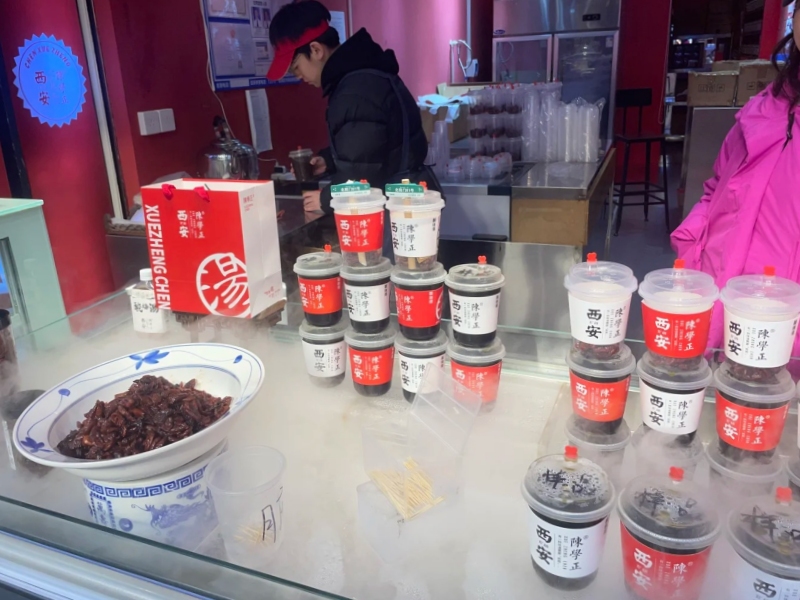
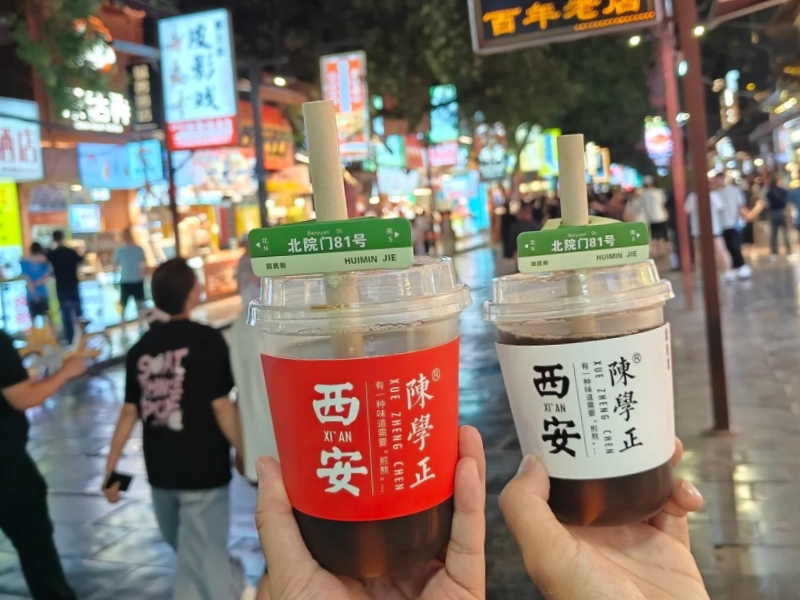
Understanding Xian Cuisine: A Deep Dive
Xian’s culinary identity is distinct from other Chinese cuisines due to its strong Northwestern Chinese character, heavily influenced by its history as the Silk Road’s eastern terminus and its substantial Muslim Hui community. This unique heritage results in several key characteristics:
- Wheat Over Rice: Unlike southern Chinese provinces where rice is king, Xian’s staple is wheat, manifesting in an incredible variety of noodles, flatbreads, and dumplings.
- Generous Use of Lamb and Beef: Reflecting the dietary practices of its Muslim population, lamb and beef are prominent proteins, often prepared with robust spices.
- Bold Flavors: The cuisine is known for its strong, direct flavors, with frequent use of cumin, chili, garlic, and vinegar.
- Hearty and Filling: Dishes are typically substantial and warming, reflecting the often colder climate of Northwestern China.
Where to Find the Best Local Food in Xian
Locating authentic Xian cuisine is key to a memorable experience. Based on my extensive exploration, here are the prime culinary hubs:
Muslim Quarter (Huimin Jie)
Muslim Quarter is undeniably the vibrant heart of Xian’s food scene. A labyrinth of narrow streets brimming with food stalls and small eateries, it offers virtually every iconic Xian dish. My advice is to visit in the late afternoon or evening when the quarter truly awakens with bustling energy, though some morning markets provide excellent breakfast options.
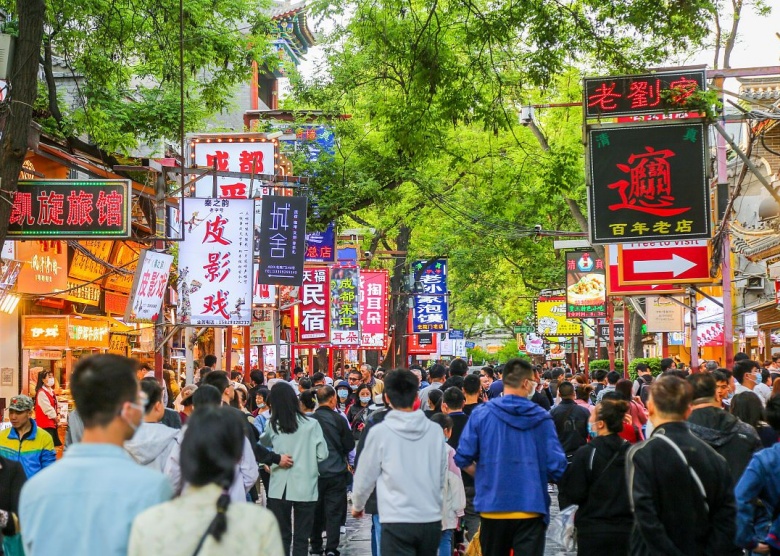
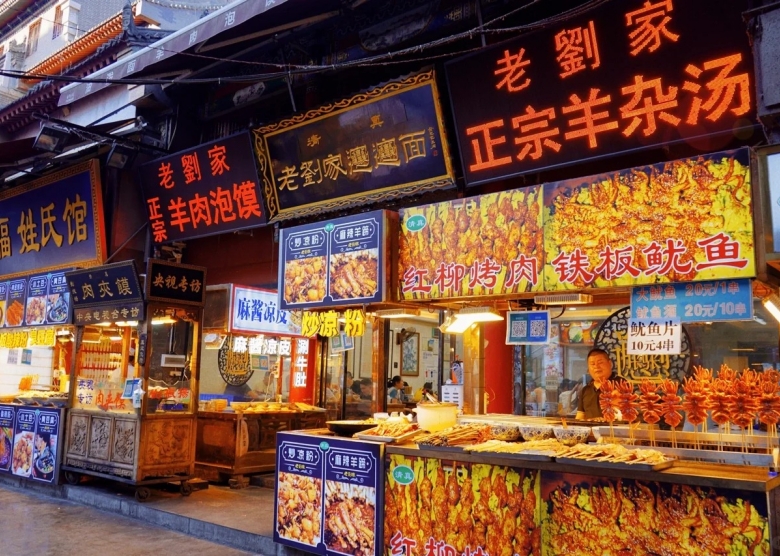
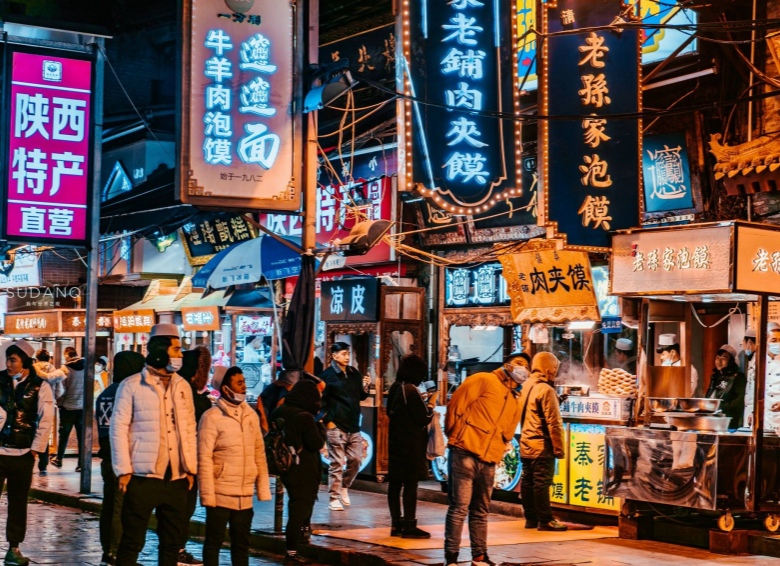
Yongxingfang Food Street
For a more organized and curated experience of Shaanxi’s intangible cultural heritage foods, Yongxingfang Food Street is an excellent choice. It’s perfect for first-time visitors who want to sample a wide array of local delicacies in a more structured environment.
Sajinqiao Street
If you prefer a less touristy, more authentically local experience, Sajinqiao Street is where you’ll discover superb Yangrou Paomo and Rou Jia Mo. Many of the most beloved local establishments are found here, often with queues of locals testament to their quality.

Dapiyuan and Miaohoujie
These areas within the broader Muslim Quarter are also worth exploring for hidden culinary gems and a deeper dive into local life.
Navigating Xian’s Food Scene: Essential Tips
To enhance your food journey in Xian, here are some practical tips that I’ve gathered over my many visits:
| Aspect | My Expert Advice |
| Best Time to Visit | Evenings (17:00–22:00) are prime for street food, when stalls are bustling, and food is freshest. |
| Spiciness Levels | Learn these phrases: “bú là” (no spice), “wēi là” (mild), “zhōng là” (medium), and “tè là” (very spicy). Most vendors are accommodating. |
| Hydration | Pair your meals with local drinks like Bingfeng soda, syrup of plum, or a cold beer (for evening meals). |
| Navigation | Google Maps may be unreliable due to China’s firewall. Download offline maps or use local apps like Gaode (AutoNavi) with an English layer. |
| Hygiene | Always carry pocket tissues and hand sanitizer. Many street stalls prioritize food quality over extensive amenities. |
| Cash vs. Digital | While digital payments (WeChat Pay/Alipay) are prevalent, having small denominations of cash is always a good idea for smaller stalls. |
Xian’s culinary DNA is a rich tapestry woven from caravan spices, imperial techniques, and the hearty spirit of Northern China. By focusing on these top 10 dishes, you’ll experience a genuine taste of its history and cultural diversity, far beyond typical tourist offerings. Every bite tells a story, from the fiery kick of Biang Biang Mian to the comforting embrace of Yangroupaomo. Immerse yourself, explore the bustling markets, and savor every moment. The best food experiences often hide in plain sight, in the busy stalls and local eateries where the true essence of Xian comes to life. Happy eating, and may your culinary adventures be as rich and satisfying as the flavors of Xian!
Explore More: